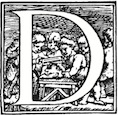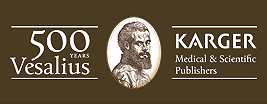
r. Vivian Nutton, medical historian and the world's foremost expert on Vesalius, describes his experience of a lifetime. Spending hours poring over Vesalius' own handwritten notes, he gained the most intimate understanding of this influential anatomist.
By Vivian Nutton
Anyone who works with rare books and manuscripts knows that there is always a chance of discovering something of importance that has never been identified before. A copy of a classical Latin poem, for instance, written out as prose in the Middle Ages, or the dismissive comments of the Swiss naturalist Conrad Gesner on his English contemporary, Edward Wotton, have been among the highlights of my researches. Marginal comments, and sometimes merely doodles, by students or readers have an immediacy that allows one to enter into their thoughts more intimately than any printed exposition. The vehemence with which the German classicist and Galenist translator Janus Cornarius struck out the name of Vesalius from his copy of the Latin Omnia Opera Galeni, now in the British Library, shows more than any words the anger felt by some contemporaries at what they saw as Vesalius’ impiety towards his great predecessor. The force with which Cornarius pressed his quill pen on to the page almost tore it apart, and left marks on several of the following pages. Sometimes the notes confirm what had long been suspected. Rabelais’ notes on Galen, now in the Sheffield University Library, show that while writing his satire on generation in his Tiers Livre, he had re-read Galen’s embryological tracts, while the traces of water on a private letter of his from Metz to Paris do fit with his description of the foul weather in which he was forced to write.
But such experiences could not compare with the excitement of being invited to examine and edit Vesalius’ annotations in his copy of the 1555 Fabrica. I was initially skeptical, for I had already seen several annotated copies, and, without solid proof, there would be little to distinguish one 16th-century annotator from another. But the photos and the dossier that Gerry Vogrincic sent me removed all doubt within minutes. He had carried out detailed comparisons of the hand in the notes with that in Vesalius’ letters, and there was a near-perfect fit, and once one began to read the actual words, there was no doubt that Vesalius was their author. The deletions, the occasional personal reference, the hundreds of tiny changes to the wording, as well as passages where the writer struggled to express himself, correcting and even re-correcting his first thoughts, all demonstrated that only the original author would have had the incredible patience to go through the huge volume in such detail and, at times, for no scientific purpose.
Progress was at first slow. I was working from some excellent photos, but it took time to become familiar with Vesalius’ handwriting. It was one thing to note down underlinings and deletions, or passages where Vesalius reworked the Latin wording, but another to decipher sentences and sections where Vesalius himself had carried out revisions. Besides, some changes were so tiny that they could easily be passed over, a full stop, for instance, transformed into a comma, and letters deep in the gutters of the volume could not photograph well. Nor, until I had actually seen the volume, could I get a true idea of the mise en page, and a feel for the way in which Vesalius went about his business. Even after a year’s transcriptions, and gaining a pretty good understanding of much of what was there (and even what was not, for the pages had been later cut down in the binding, losing several letters and even lines in the process), I knew that there would be still much to discover when I finally saw the book itself.
I was not disappointed. True, because the photographs I had already received had picked up almost all the changes Vesalius had made, the new material was relatively unimportant, only a few underlinings and additional letters. But it was a humbling experience to sit in a quiet room for a few days following Vesalius as he went through the proofs of his second edition (for this is what the bound volume contained), and then returned again and again in an attempt to make his thoughts and findings as clear as possible to future readers. At times one could see when he dipped his pen in the ink, or obtained a new quill. Some notes were hurried, others clearly required some thought. Few authors, even today, spend so much time in a search for the exact word, not just to give the reader a notion of the three-dimensionality and feel of a bone, but to secure euphony and stylistic elegance. The great majority of the changes are stylistic, something unexpected if Vesalius is regarded only as an anatomist, but they reveal almost an obsessive desire to get it right. Even to read the huge volume takes weeks, let alone with a close attention to tiny details, such as punctuation. How many hours, I wondered, had Vesalius spent simply in reading and rereading his book, listening to his own words and deciding that one adjective was better than another, a sentence too complex for his readers, or a comma less effective than a semi-colon?
But it was less Vesalius’ words that moved me than his improvements to his plates. At one point he instructed his printer how to replace a damaged identifying letter by cutting a thin sliver of wood and inserting it into the block. Elsewhere he identified what had been the tiniest of errors by the block-cutter, and drew or redrew the original line on the page in an incredibly tiny hand with the thinnest of pens. Indeed, so slender was his line that it could hardly be seen with the naked eye, and became properly clear only under a magnifying glass or on the computer screen and the very act of enlargement diminished what Vesalius had done. Here one was getting close to the real genius of Vesalius – his ability to see even the smallest of differences that would have passed most observers by, as well as his careful, steady hand in tracing an outline. His almost unprecedented use of the visual to establish his ideas, either by drawings in his lectures, his Six anatomical tables and the Fabrica itself, is well known, and the Fabrica was until recently valued far more for its plates than for its text. But sitting and gazing at Vesalius’ drawings gave me an added understanding of the man. I kept returning to the plates to consider how much Vesalius had contributed to their artistry, and to wonder at his genius.
I had hoped that the notes might show a whole series of anatomical discoveries by Vesalius. There are, indeed, a few, almost all relating to the bones and to the head, but they are not what makes these annotations so important. Rather, they show first of all his continued commitment to dissection after 1555. Even if he seems to no longer have had the opportunity to cut up a whole body, he looked at bones (or at least reflected on what he had once seen), and many of his changes reflect his aim to put into words and images the plasticity of the human body, the shape, texture and appearance of its parts. Secondly, because one can follow Vesalius as he writes his comments and corrections, one gets the impression of what some might term almost an obsession with getting things right. He is continually concerned to revise what he had written earlier, coming back several times to a particular passage in order to convey his thoughts as precisely and clearly as possible. But this obsessiveness is also part and parcel of his achievement, for it contributes to convincing others of the truth of his observations.
It would have been easy to be blasé about what I found. After all, I had read over the years, and indeed published, similar collections of annotations by scholars both famous and unknown, and I had gazed in many libraries at showcases with autographs of the celebrated dead. But thanks to the kindness and generosity of Gerry Vogringic and his wife, this was a very different experience. Working in a room on the other side of the world from Brussels and Padua, I found myself drawn into the mind of Vesalius as he painstakingly reread, rewrote and redrew his masterpiece. I could begin to follow his line of thought as one idea or one correction then involved another further down the page. Some sections seem no longer to have interested Vesalius, in others the near illegibility of his hand indicates that he found there something important he needed to say quickly, and even more so if he went back and rephrased what he had first written.
But I was also overwhelmed by a melancholy thought. The volume is now available to the public in the safety of the Fisher Rare Books Library in Toronto, some photographs have been published and others will undoubtedly follow. But photographs, however brilliant, and the opportunity to see Vesalius’ notes either on an opened page in a showcase or as a scholar at a desk in a major library will never replace the intimate experience of being alone with Vesalius for hours. I found myself thinking back to what it must have been like for another Englishman, John Caius, who shared a house in Padua with the man he called in his own notes ‘Wesalius’. There was the thrill of discovery – and I have no doubt that others will find things I have overlooked --, but that paled by comparison with the privilege of being able to spend uninterrupted time with Vesalius, to turn over the pages as he had done, to reflect on what he had written and was trying to say, and, above all, to marvel at his corrections to the plates. No-one, not even the owner, had ever before been able to commune in this way with Vesalius, and library rules will, rightly, impose a wise restraint on any future investigator. In more than one sense this was the experience of a lifetime, which has left me both grateful and humble.
